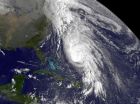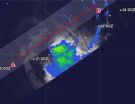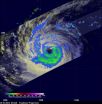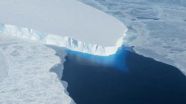(Press-News.org) No matter which way you look at it, rejection hurts. Experiencing rejection from a boss, a friend, or a partner is difficult enough for many adults to handle. But adolescents, who are dealing with the one-two punch of biological and social change, may be the most vulnerable to its negative effects.
In a new study published in Clinical Psychological Science, a journal of the Association for Psychological Science, researcher Michael Murphy and colleagues examine the human immune response as a potential link between social stressors like rejection and later mental and physical health outcomes.
There are many kinds of stressors that increase our risk for disease, but stressors that threaten our social standing, such as targeted rejection, seem to be particularly harmful.
Many people are probably familiar with targeted rejection from their school days, when a student was actively and intentionally rejected by another student or a group of students. It's the kind of behavior that we see in so many cases of ostracism and bullying.
"Targeted rejection is central to some of life's most distressing experiences – things like getting broken up with, getting fired, and being excluded from your peer group at school," said Murphy. "In this study, we aimed to examine processes that may give these experiences the ability to affect health."
Previous research has shown that people who are on the receiving end of this kind of rejection experience symptoms of depression three times faster than people who are faced with similarly severe life events. Researchers believe that certain inflammatory processes that are part of the immune response could be a link between targeted rejection and depression.
Murphy and colleagues decided to directly investigate whether rejection-related life events affect inflammatory activity by conducting a study that followed 147 healthy adolescent women over 2.5 years. The participants did not have a personal history of mental health problems but were all at risk for major depression due to family and other personal risk factors.
The participants were assessed for psychiatric diagnoses, incidences of targeted rejection, perceived social status, expression of inflammatory signaling molecules, and indicators of low-grade inflammation every 6 months over the course of the study.
The data collected suggest that recent exposure to targeted rejection does indeed activate the molecular signaling pathways that regulate inflammation. Participants had elevated levels of pro-
inflammatory signaling molecules at visits when they had recently experienced an incidence of targeted rejection compared to visits when no targeted rejection had occurred.
Interestingly, the effect was more pronounced in those who perceived their social status to be higher.
Murphy and colleagues speculate that this inflammatory response might be adaptive for individuals at the top of a social hierarchy, giving them a survival advantage. The researchers note, however, that an overly productive immune response can be harmful to mental and physical health in the long run.
If substantiated in future research, these findings could have implications for understanding how social conditions increase risk for a variety of inflammation-related diseases, including obesity, diabetes, cardiovascular disease, certain types of cancer, and depression.
###
The study was co-authored by George M. Slavich, University of California, Los Angeles; Nicolas Rohleder, Brandeis University; and Gregory E. Miller, University of British Columbia.
Clinical Psychological Science — a new journal from APS — publishes advances in clinical science and provides a venue for cutting-edge research across a wide range of conceptual views, approaches, and topics. The journal encompasses many core domains that have defined clinical psychology, but also boundary-crossing advances that integrate and make contact with diverse disciplines and that may not easily be found in traditional clinical psychology journals. Among the key topics are research on the underlying mechanisms and etiologies of psychological health and dysfunction; basic and applied work on the diagnosis, assessment, treatment, and prevention of mental illness; service delivery; and promotion of well-being.
The research was supported by grants from the Canadian Institutes of Health Research, the National Alliance for Research on Schizophrenia and Depression, the Heart and Stroke Foundation of Canada, and the National Institute of Child Health and Human Development.
For more information about this study, please contact: Michael L. M. Murphy at murphym@psych.ubc.ca.
Clinical Psychological Science is APS's newest journal. For a copy of the article "Targeted Rejection Triggers Differential Pro- and Anti-Inflammatory Gene Expression in Adolescents as a Function of Social Status" and access to other Clinical Psychological Science research findings, please contact Anna Mikulak at 202-293-9300 or amikulak@psychologicalscience.org.
END
Cambridge, Mass. - October 16, 2012 - Atmospheric chemists at the Harvard School of Engineering and Applied Sciences (SEAS) have found that when it comes to secondary organic material in the atmosphere, there are two distinct breeds: liquids and jellies.
Secondary organic materials (SOM) are airborne particles that have begun to react with gases in the atmosphere. In the last 20 years' research and climate modeling, these SOM particles have been assumed to drift as liquids. In a liquid phase, the organic materials would absorb other compounds like ammonia or ozone very ...
The song "How do you solve a problem like Maria?" from the famous film "The Sound of Music" comes to mind when looking at NASA satellite imagery of Tropical Storm Maria churning in the western North Pacific Ocean. The answer lies in increased wind shear and cool ocean temperatures – two factors that can weaken the storm, but won't be present over the next day or two.
NASA's Aqua satellite passed over Tropical Storm Maria on Oct. 16 at 0355 UTC, 12:55 p.m. local time Tokyo/Japan (Oct. 15 at 11:55 p.m. EDT) and the Moderate Resolution Imaging Spectroradiometer (MODIS) instrument ...
NASA's Aqua satellite captured a stunning image of Hurricane Paul in the eastern Pacific Ocean that revealed Mexico's Socorro Island was just outside of Paul's eye. Now, Paul is expected to track along the Baja California coast, triggering more warnings.
Hurricane Paul is stirring up rough seas in the eastern Pacific Ocean and warnings are posted along Baja California.
A hurricane warning is in effect for the west coast of Baja California from Santa Fe northward to Punta Abreojos. A tropical storm warning is in effect for the west coast of Baja California north of Punta ...
Hurricane Rafael is a large hurricane and Bermuda has battened down for Rafael's battering today, Oct. 16. NOAA's GOES-14 satellite revealed Rafael's large span that covers several hundred miles and dwarfs Bermuda.
NOAA's GOES-14 satellite captured a visible image of Tropical Storm Rafael in the Atlantic on Oct. 16 at 7:45 a.m. EDT. The image shows the extent of Hurricane Rafael, which is over 410 miles in diameter. That's longer than the distance between Boston and Washington, D.C. The visible image also showed a thick row of clouds northwest of Rafael. Those clouds ...
VIDEO:
Dr. O'Shea discusses her research.
Click here for more information.
LA JOLLA, CA---- Cold viruses generally get a bad rap----which they've certainly earned----but new findings by a team of scientists at the Salk Institute for Biological Studies suggest that these viruses might also be a valuable ally in the fight against cancer.
Adenovirus, a type of cold virus, has developed molecular tools----proteins----that allow it to hijack a cell's molecular machinery, including ...
Satellite imagery from NASA's TRMM satellite showed that wind shear is pushing the bulk of rainfall away from the center of Tropical Storm Anais.
When NASA's Tropical Rainfall Measuring Mission (TRMM) satellite passed over Tropical Storm Anais on Oct. 16 at 0654 UTC (2:54 a.m. EDT), light to moderate rainfall was occurring southeast of the center and falling at a rate between .78 to 1.57 inches/20 to 40 mm per hour. The displacement of rainfall from around the storm's center to the southeast indicates moderate to strong northwesterly wind shear.There no areas of heavy ...
Tropical Storm Prapiroon is still meandering in the western north Pacific Ocean, and NASA's TRMM satellite noticed that dry air and wind shear are adversely affecting rainfall north of the storm's center.
NASA's Tropical Rainfall Measuring Mission (TRMM) satellite flew above Prapiroon when it was a typhoon on Oct. 15, 2012 at 0632 UTC (2:32 a.m. EDT). Prapiroon's sustained wind speeds had dropped to 70 knots (~81 mph) with a large and ragged eye being its dominant feature. TRMM's Microwave Imager (TMI) data indicated that the most intense rain bands south of Prapiroon's ...
NASA's Operation IceBridge got the 2012 Antarctic campaign off to a productive start with a land ice survey of Thwaites Glacier and a sea ice flight over parts of the Bellingshausen Sea.
During the first few weeks of a campaign, IceBridge typically concentrates on sea ice before it begins to melt as spring temperatures rise, but as often happens in the field, the weather had other ideas.
On Oct. 12, the IceBridge team met with meteorologists at the Punta Arenas airport to discuss weather conditions and make a final decision on where to fly. "The forecast for all sea ...
Ice-sheet retreat can halt temporarily during long phases of climate warming, according to scientists.
A UK team led by Durham University has found that the geometry of channels beneath the ice can be a strong control on ice behaviour, temporarily hiding the signals of retreat.
The findings, which provide the first simulation of past ice-sheet retreat and collapse over a ten thousand year period in Antarctica, shed new light on what makes ice stable or unstable and will help refine predictions of future ice extent and global sea-level rise, the researchers say.
The ...
An inexpensive, five-minute eye scan can accurately assess the amount of brain damage in people with the debilitating autoimmune disorder multiple sclerosis (MS), and offer clues about how quickly the disease is progressing, according to results of two Johns Hopkins studies.
"The eye is the window into the brain and by measuring how healthy the eye is, we can determine how healthy the rest of the brain is," says Peter A. Calabresi, M.D., a professor of neurology at the Johns Hopkins University School of Medicine, and leader of the studies described in recent issues of ...








